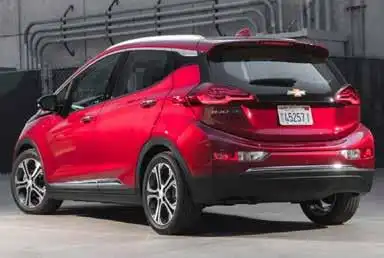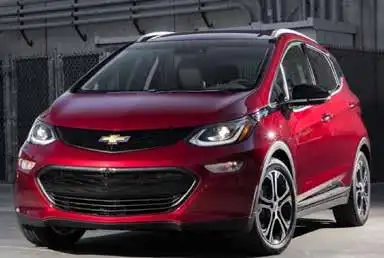
8 minute read
Automobiles to Envy
QUICK LOOKS Modern Lifestyles Staff and Timothy Miller
2020 MB AMG CLA35
Advertisement
The 2020 Mercedes Benz CLA seems to be the smaller version of the CLS. The first AMG version here, the CLA35, may be the smartest way to experience that car’s exuberant style at a fraction of the cost.
The CLA35 is the midrange trim between the upcoming base CLA250 and the AMG CLA45. Working with a 2.0-liter inline-four and thanks to a powerful twin-scroll turbo, aluminum crank, lowfriction components, and multi-spark ignition, there’s 295 lb-ft of torque at 3000 rpm, which in this size of car will feel like much more.
A seven-speed dual-clutch automatic transmission with standard 4Matic+ all-wheel drive and brake-based torque vectoring drive the 18-inch tires. They’re backed by 13.8-inch front brakes with four-piston fixed calipers bolted along the rotor, a method commonly used in AMG’s much faster street cars, and 13.0-inch rear brakes with floating calipers, each ventilated and perforated. Additional braces and an aluminum plate underneath the engine stiffen the CLA35’s body for maximum attack in Sport+ mode, with the expected pops and bangs from the exhaust. A new set of driving modes allows the driver to fine-tune the stability control and torque vectoring.
Three-zone climate control, 64-color ambient lighting, eight-way power driver and passenger one-piece sport seats with memory, a panoramic moonroof, LED headlights, and the MBUX infotainment system with dual 10.3-inch screens and an internet-enabled voice assistant listening for the phrase “Hey, Mercedes” all come standard. Everything else, including the Sun Yellow paint seen here, navigation, 360-degree cameras, and the company’s latest semiautomated driver assists, is optional. QUICK LOOKS




QUICK LOOKS




2020 RANGE ROVER VELAR
The Velar is bigger than the Evoque but smaller than the Sport. It shares its underpinnings with the Jaguar F-Pace, which gives you an idea of is size.
Smooth, pared-back and slimmed-down style. The Velar’s silhouette is quite fast, marked by a rising belt, falling roof, pinched tail and a lot of screen rake.
The cabin is even more of a revelation, for the way style and function meet in an all-new glass-cockpit system for displays and controls.
The big news inside is the display and control system. In the center console are two big touchscreens, both apparently edgeless and glossy-black when the ignition’s turned off. The lower one carries a pair of knurled twist-and push knobs.
Switch on and the upper screen is much like any other upmarket car’s: it carries navigation, entertainment, comms and lots of configurable car features. It’s not overloaded by having to carry the climate control though.
Climate is on the lower screen: it has very nicely rendered graphics of zephyrs of temperate air wafting into the occupants. The two knurled knobs control driver and passenger temperature. Or push them and they’re the seat heaters, their markings changing to suit. Or hit the seat massage button on the screen and their markings change again, helping you turn up or down the massage’s efforts. You soon realize this is a whole lot easier than using a touch-screen alone.
Don’t come to the Velar for Porsche Macan-like agility. Like a proper Range Rover, it’s dignified and in command of most situations, with well-oiled accurate steering. If you’re in a real hurry, the sport mode does tauten the damping, lower the body and shift more power to the rear - where the power should be!




2020 MAXIMA SR
I was pleasantly surprised when Nissan’s sporty version of their largest car arrived. For starters, it looks great. With a huge front grill, sharp exterior edges, big wheels and low profile tires, and burnt orange paint, it jumped out in my drveway.
It is good to note that the 2020 Maxima is one of the best affordable family cars on the market and the SR package includes some genuine performance upgrades including a sport-tuned suspension and 19-inch alloy wheels with low profile tires. Nissan advertises it as a fourdoor sports car with good cause.
The “Maxima fun” is generated by the normallyaspirated 3.5-liter V6 that pumps out 300 horsepower and 261 foot-pounds of torque. Unlike the smaller turbocharged four cylinder engines that some manufacturers prefer because of their slightly better fuel economy, Nissan’s proven V6 feels much faster off the line, especially in the Sport mode that increases throttle response.
The engine is also mated to one of the best continuously variable transmissions available today, which includes both a manual shift mode and paddle shifter for even more control.
Because the Maxima is first and foremost a family car, Nissan has packed it with a lot of standard and available safety features. They include automatic emergency braking with pedestrian detection, blind spot warning, rear cross traffic alert, lane departure warning, high beam assist and rear automatic braking, a 360-degree camera system and road sign recognition.
At around $43 grand the Maxima SR is an excellent value of luxury and performance.
QUICK LOOKS




2020 MB AMG GT53
All new just last year, the Mercedes-AMG GT53 is the German brand’s latest version of a “four-door coupe.” Although its name seems to imply that this sexy four-door, four-seat hatchback sedan is based on the GT coupe, Mercedes has actually used the bones of the E-class. The cars’ high-performance hardware and powerful engine, however, is pure AMG. Allwheel drive, electronically adjustable dampers, sport seats, and big horsepower for necksnapping acceleration.
While much of the interior is shared with the other four-door coupe from Mercedes, the CLS, the large console between its seats appears to have been pulled from the GT sports car. The interior design overall is futuristic and visually exciting, but some of its ergonomics can take some getting used to. This is also a fourseater, which may be an issue for some families. Aggressively bolstered sport seats are standard and comfortable, while a fat and flat-bottomed steering wheel, aluminum trim, and digital gauge cluster fit the sedan’s high-performance mission.
Under the hood of the 2020 GT53 is a snarling inline-six-cylinder engine that features a supercharger, a turbocharger, an intercooler, and a small electric motor. From a stop, the electric motor and supercharger fill in the brief lapse before the turbo is fully committed. The 3.0-liter, which packs a combined 429 horsepower, pushes you back in your seat whenever you touch the accelerator. The GT53 features a conventional nine-speed automatic transmission, accelerates to 60 mph in 4.1 seconds and its sport-tuned suspension delivers flat, responsive cornering and sports-car levels of grip.
2020 BOLT EV PREMIER
The Chevrolet Bolt continues to win over skeptics who think the average American will never buy an electric car.
Designed to be an electric from the ground up, the Bolt’s engineers were able to incorporate the 1,000-lb. battery pack into the Bolt’s design in a way that isn’t a detriment to the vehicle’s ride and handling. With a 9-hour average charge time (at a 240-volt charging station) or a little under two hours using a DC Fast Charging station, the Bolt still isn’t as convenient as a gasoline-powered car, but it is more environmentally friendly, cheaper to fill up and a lot more hip. The Bolt is cute and fun to drive, and with a 259-mile range, it can outdistance other electric cars for overall range.
The Bolt has an independent front suspension and a semi-independent rear suspension. Sophisticated electric power steering delivers good response, with a light weight at low speeds and heavier feel at higher speeds. The low center of gravity (thanks to the battery placement in the chassis) lends a sense of stability around the curves. It’s even possible to wring a little bit of fun out of the Bolt on a winding road.
The Bolt offers a level of engagement that you can enter into, or not, as your personality and tastes dictate. If you’re into the gaming aspect of EVs, you can interact with the car to maximize range. It gives you feedback in the instrument panel to let you know how you’re doing. Or just pay attention to your state of charge and range like you would normally with a fuel gauge.














